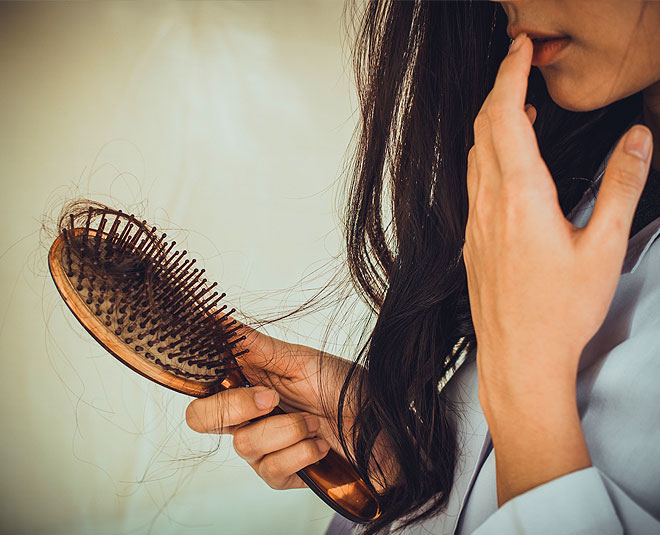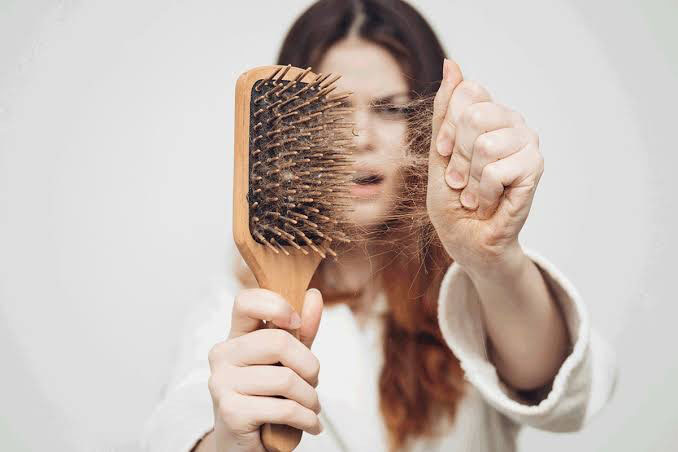
In addition, skin disorders, such as psoriasis, can spread to the scalp, affecting hair growth. Minoxidil (Rogaine) is a topical medication (the type you apply to your scalp) approved by the FDA for female pattern hair loss. It's is available over the counter as 2% and 5% solutions. It takes about 6-12 months of this once-daily use foam treatment to see results. You're unlikely to lose all of your hair with female pattern baldness.
What Causes Hair Loss in Women?
With this type of hair loss, your follicles gradually shrink and the growth cycle is shortened. Some women may even notice hair growth changes after going off hormonal birth control pills. Hormonal changes of any kind, particularly falling estrogen levels, can temporarily disrupt the hair life cycle. Although it’s more common in men, hair loss regularly affects women and people of other genders.
What questions should I ask my healthcare provider?
Genetic hair loss can start after puberty and lead to a pattern of hair loss. Alopecia areata is a common autoimmune condition that can onset in childhood or as a teenager. Androgenetic alopecia is a genetic form of hair loss referred to as male-pattern baldness or female-pattern baldness. With an accurate diagnosis, many people who have hair loss can see hair regrowth.
How is hair loss in women treated?
We lose our hair for many (with emphasis on many) reasons. Illness can trigger hair loss, especially if it goes hand-in-hand with a high fever. “Any major shock to the body can cause you to start shedding two or three months later,” Dr. Khetarpal says. In women, this can be brought on by the physical shock of giving birth, emotional distress, mental illness, surgery, or certain diseases.
The only way to treat poison-induced hair loss is to diagnose what poison you have been exposed to. Hair typically regrows after someone stops poison exposure. Minoxidil solution — Rogaine in the United States and Regaine in the United Kingdom — which is applied directly to the scalp, dilates blood capillaries.
Our Recommended Anti-Hair Fall Shampoos and Conditioners
People with the condition are genetically predisposed to have a stronger response to androgens (male hormones) in their scalp. If you recently had an operation, high fever, or chemotherapy for cancer, it’s natural to shed lots of hair. A few months after giving birth, most women shed noticeable amounts of hair. But excessive shedding — known in medical terms as telogen effluvium — is often a sign that something’s up. Sudden weight loss and very restrictive diets can also cause telogen effluvium. In men and women, such hair loss can accompany rapid weight loss following bariatric surgeries, such as gastric bypass.

When excessive hair shedding occurs, it's known as telogen effluvium. Someone with telogen effluvium can lose 300–500 hairs daily. Some causes of hair loss in teenagers can be stopped and potentially reversed.
Harvard Health Ad Watch: New drug, old song, clever tagline
Researchers have also found vitamin and mineral deficiencies related to hair loss. Anemia (iron deficiency), a condition common among women, can contribute to hair loss. Furthermore, researchers have linked insufficient selenium, zinc, vitamin B12, riboflavin, and vitamin D to alopecia. The medication works by prolonging the growth phase of hair, giving your hair more time to grow out. Hair loss can happen a couple of weeks to 6 months after any stressful experience. A 2020 study tracked 79 women taking spironolactone daily (doses ranged from 25–200 mg) for a minimum of 6 months.
Rosemary oil and hair growth: Research, effectiveness, and tips - Medical News Today
Rosemary oil and hair growth: Research, effectiveness, and tips.
Posted: Wed, 15 Nov 2023 08:00:00 GMT [source]
If you need treatment for regrowth, the earlier you start, the more likely you are to see regrowth. Low-level laser therapy — also called red light therapy or cold laser therapy — irradiates the scalp to promote blood circulation and encourage hair growth. Most women lose a lot of hair a few months after giving birth. Later in life, some women notice extra shedding during menopause.
Hair usually regrows when your hormones get back to normal. Your hair can regain its usual fullness 6 to 9 months after childbirth. Most people lose anywhere from 50 to 100 strands of hair each day, according to the American Academy of Dermatology.

If a doctor suspects a medication is causing hair loss, they may prescribe a lower dose or switch medications. Telogen effluvium is a condition in which the hair remains in the telogen phase of the cycle. This causes more hair than usual to fall out, sometimes in handfuls. The condition is more likely to occur as a person ages, but it can start at any point after puberty.
If you have excess coconut oil, yogurt, or rosemary oil lying around, you can apply them to your hair as masks to help promote hair growth. You can let them know that you’re ready to listen if they want to talk about it. Other causes, like genetic hair loss, have no known cure and will likely progress with time but can be slowed down with treatment. Polycystic ovary syndrome is a common female health issue that leads to excess levels of androgen, or male sex hormones. Thyroid conditions that lead to an underproduction or overproduction of thyroid hormones may cause hair loss or brittle hair.
Once the stress goes away, your hair may get back to normal in 6-9 months. Speak with a doctor about any troubling hair loss, shedding, or thinning you may be experiencing. Your doctor can help determine the cause of your symptoms and put together a treatment plan. If you lose significant hair, it’s important to protect your scalp.
No comments:
Post a Comment